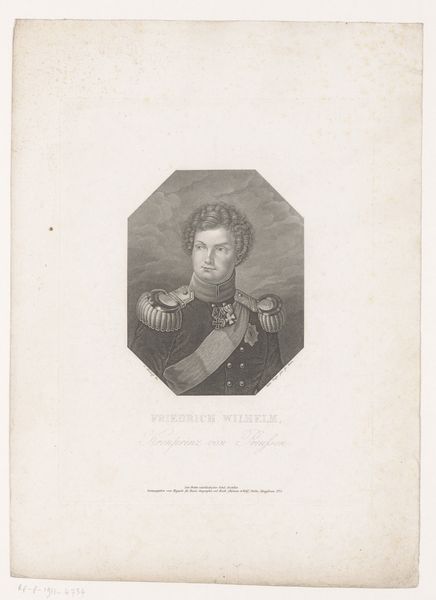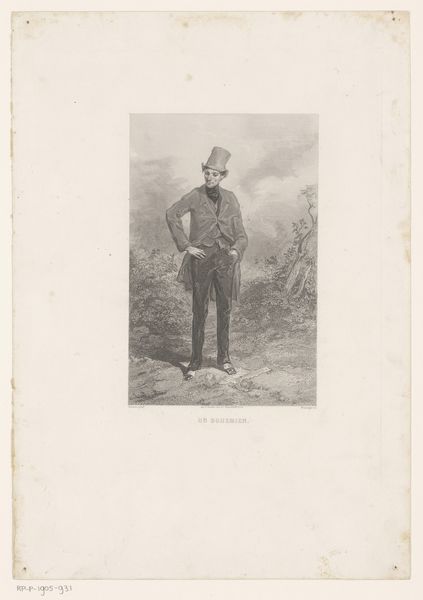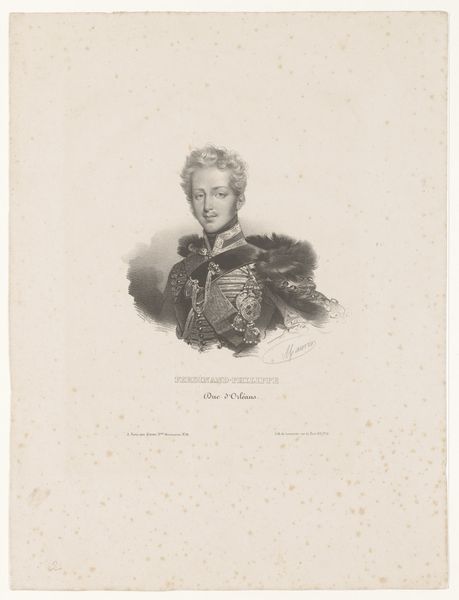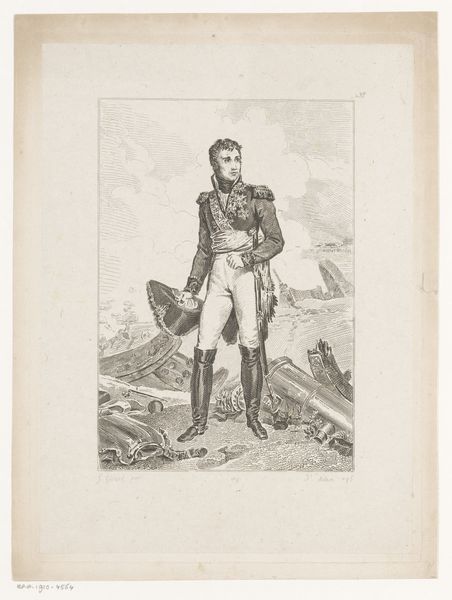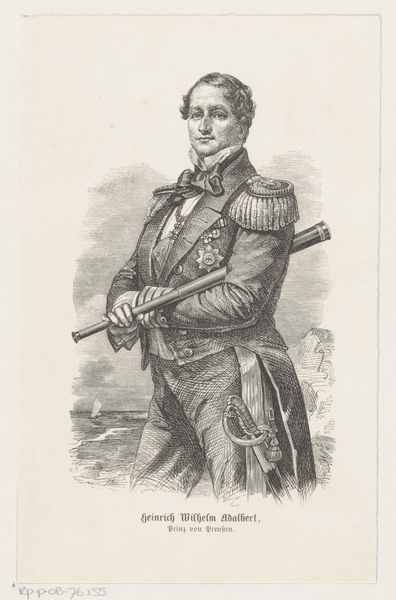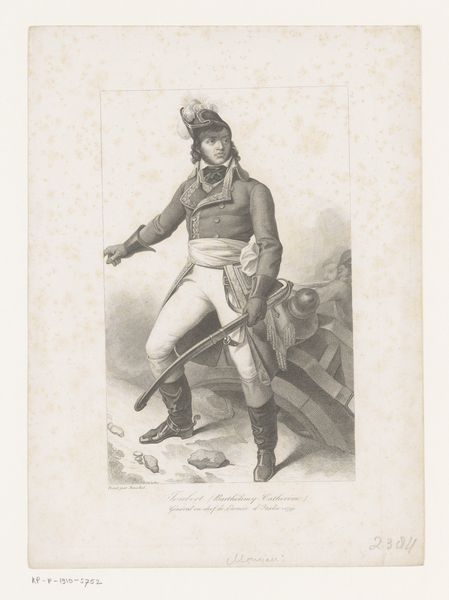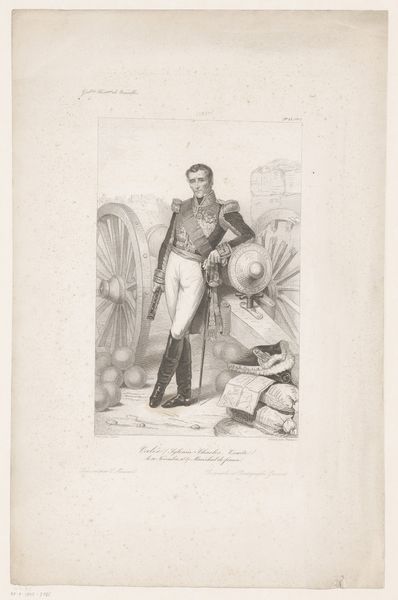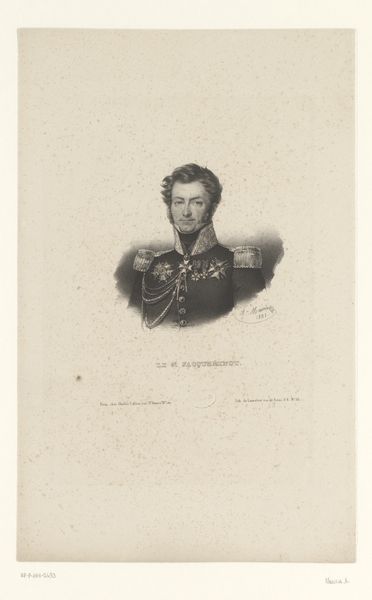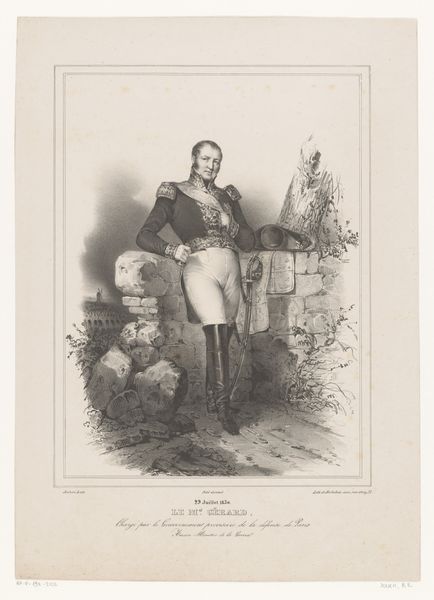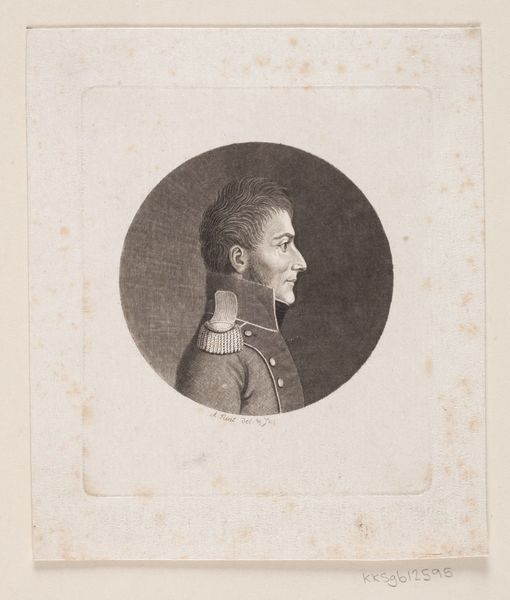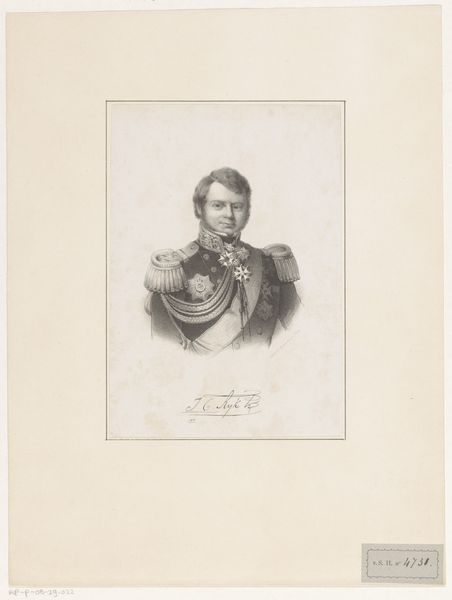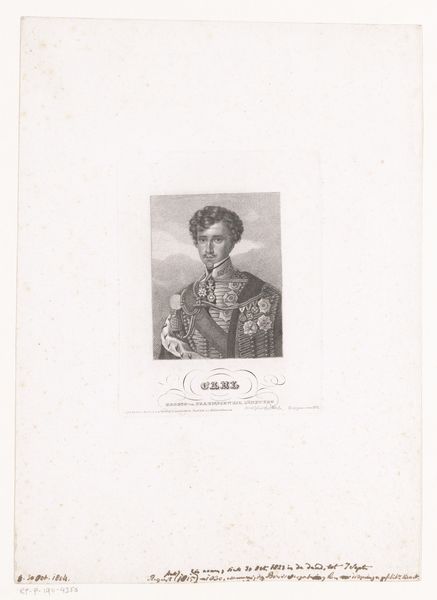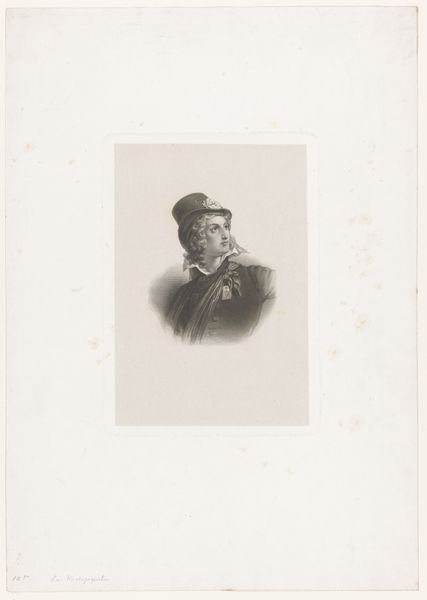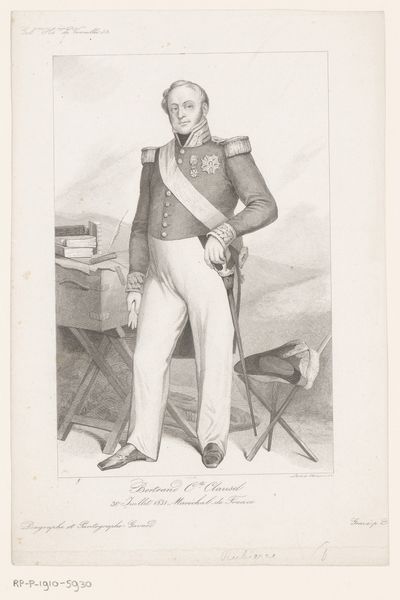
Portret van luitenant generaal Bernard van Saksen-Weimar 1831
0:00
0:00
#
portrait
#
print photography
# print
#
romanticism
#
history-painting
Dimensions: height 475 mm, width 340 mm
Copyright: Rijks Museum: Open Domain
Curator: Before us stands "Portret van luitenant generaal Bernard van Saksen-Weimar," created in 1831 by Hendrik Jan Heerenbrood. It's a print, housed here at the Rijksmuseum. Editor: There's a brooding quality to this portrait; the monochrome palette lends a serious air. The lieutenant stands sharply in focus against the tumultuous, hazy backdrop, creating a stark juxtaposition. Curator: Precisely. It reflects the Romantic era's fascination with individual heroes against the backdrop of historical upheaval. Bernard van Saksen-Weimar was a significant military figure. His leadership, particularly during the Napoleonic Wars, shaped his legacy. This print, therefore, serves as a form of memorialization, solidifying his place in Dutch history. Editor: I am struck by how Heerenbrood uses contrasting textures. The lieutenant’s uniform appears smooth, almost velvety, contrasting with the coarse texture implied in the landscape. Note also the distribution of tonal values, darkest at the figure's feet, slowly dissolving into greys in the background. Curator: Indeed, the background hints at the chaos and human cost of war, indirectly speaking to the subject's military achievements while simultaneously acknowledging its consequences. It engages with the social perception of military leaders, caught between heroism and the realities of conflict. The gaze, slightly averted, avoids a direct confrontation, as if burdened by his leadership role. Editor: The light seems carefully calibrated, highlighting key areas of the composition—his face, his hands—almost in a symbolic sense, illuminating his intellect and capacity for leadership. How does the piece fit within the larger Dutch narrative of the period? Curator: It taps into a wave of nationalistic pride prevalent during the 19th century, during a time when the Netherlands was establishing its identity as a unified kingdom after French occupation. Displaying such portraits helped forge a shared cultural memory and reinforce notions of national identity, celebrating figures who contributed to the collective history of the region. Editor: Thank you; viewing this print through the lens of national identity certainly provides new layers of appreciation for how it conveys its narrative. Curator: It’s been interesting for me, too. It really underscores the connection between individual artistic interpretation and the shaping of national narratives.
Comments
No comments
Be the first to comment and join the conversation on the ultimate creative platform.
